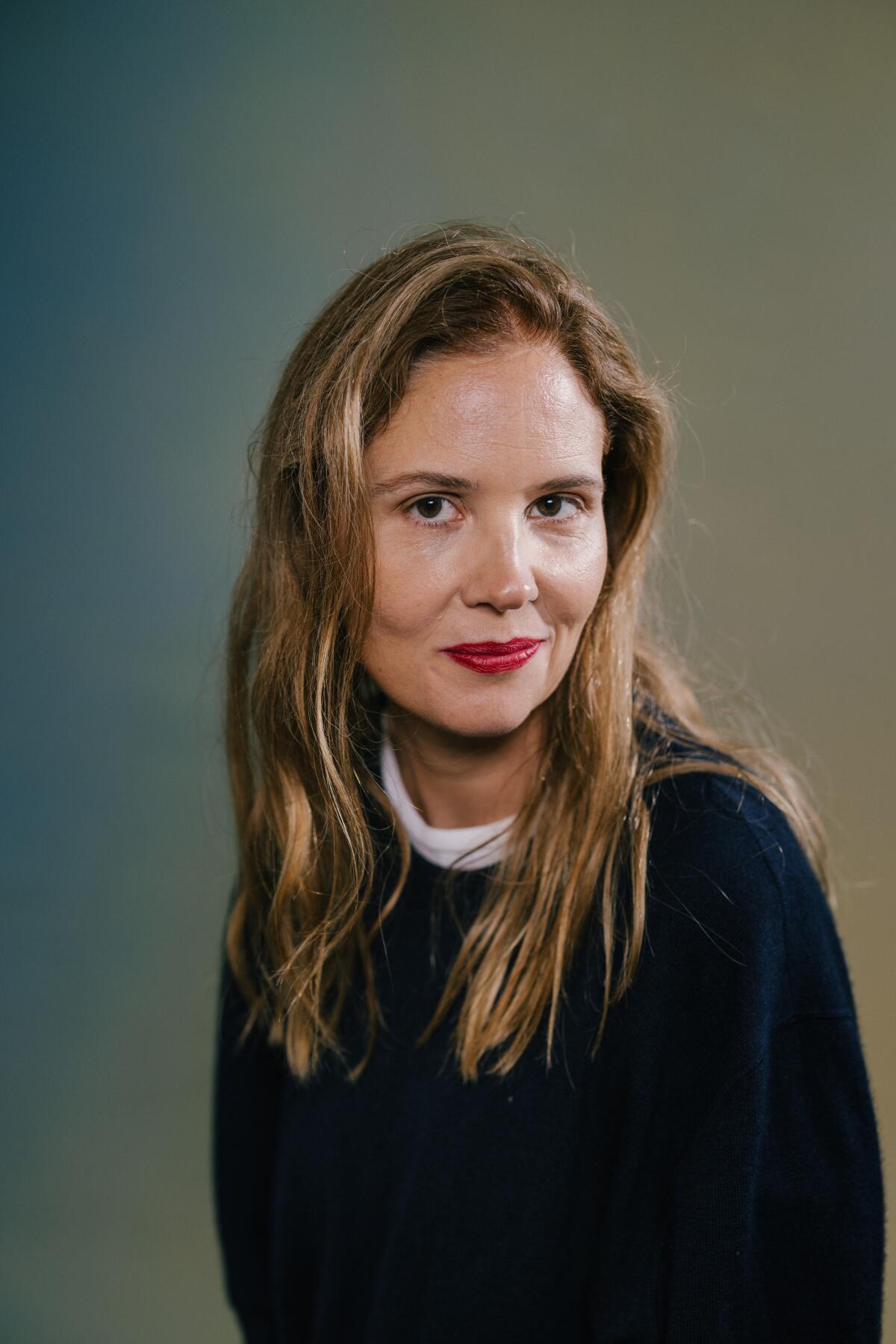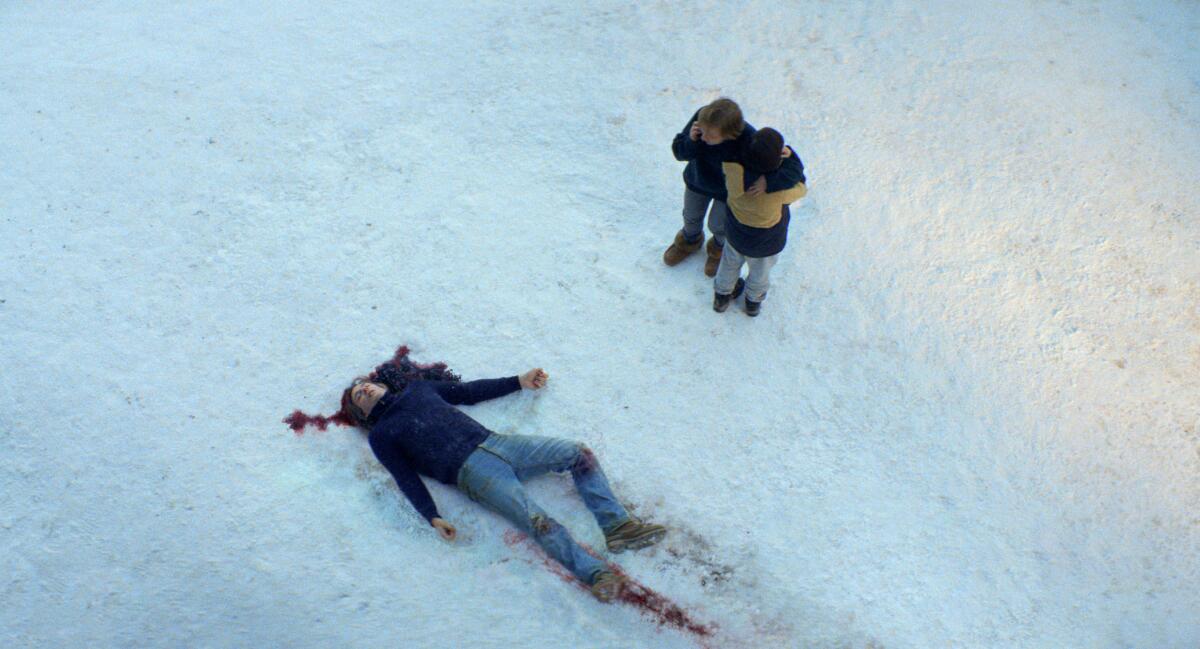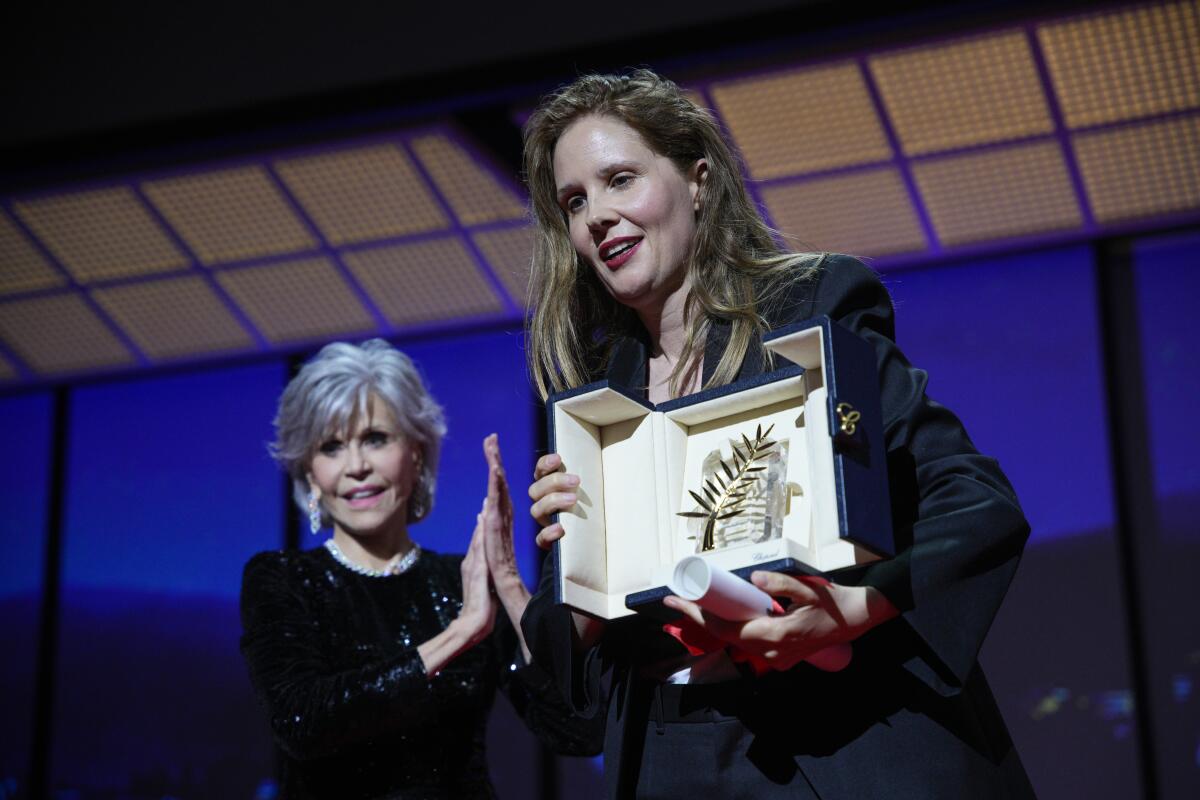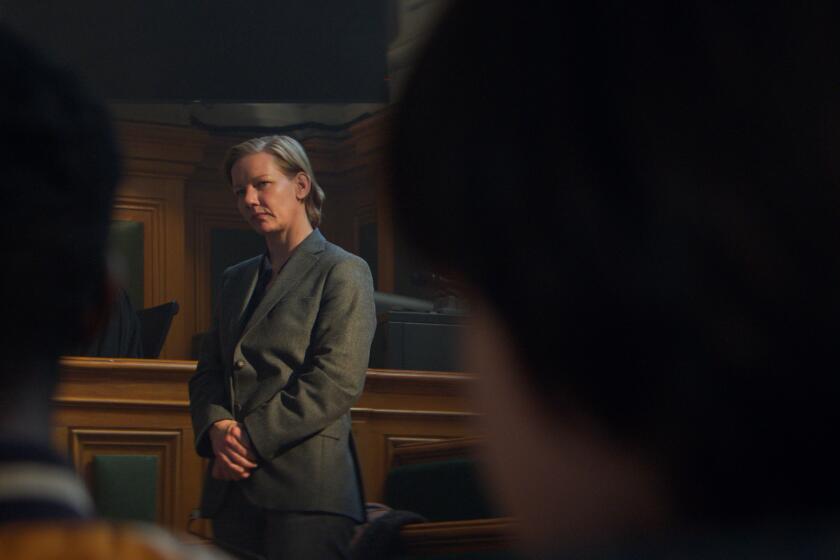A marital murder mystery written by a real-life couple? They didn’t kill each other

- Share via
Justine Triet’s “Anatomy of a Fall” is a film with a double mystery at its heart. It begins with a man’s tragic death, tumbling from the window of an alpine house into the snow. Questions surround his wife and a full-blown trial begins. But as the courtroom drama percolates, something even more complex comes to the fore: the anatomy of a marriage and the tangle of perspectives that make up a family.
Sandra (“Toni Erdmann‘s” Sandra Hüller), a famous author, finds her entire life subject to scrutiny and insinuation. Her disputes with her late husband, Samuel (Samuel Theis), become public in mortifying ways. Their 11-year-old son, Daniel (Milo Machado Graner), who is blind, is thrust into the position of judging his own parents, like the prosecutor and jury.
The critically acclaimed film boasts the Palme d’Or from Cannes (where director Triet also competed in 2019 with “Sibyl”) and earned millions at the French box office. Distributor Neon acquired the film in May, sensing a conversation-starter in the riveting she-said-he-said journey.
But what viewers may not know is that this gnarly story of a couple was also written by a couple. Triet’s chosen collaborator for years has been her partner, Arthur Harari, himself a writer-director and actor. They co-wrote “Sibyl” and, before that, Harari gave Triet notes on her 2013 feature debut, “Age of Panic,” in which he starred.
“I think I was very possessive with lines in my script before,” Triet says. “For me, it was a very sacred space. I dropped everything and said, ‘OK, I want to work differently,’”
“Anatomy of a Fall” was an intense collaboration, written by the couple during pandemic lockdown. They live in Paris with their two children.
“Most of the time we would be in the same flat and so, in order to concentrate, we would write on our own,” Harari says. “She would try something first and then send it to me, and I would propose changes and send it back. A lot of emails.”
I spoke with Triet and Harari over Zoom in early October, the week before “Anatomy of a Fall” screened at the New York Film Festival. Triet leaned forward into her responses with an appealing genuine ardor, wrapping up her answers with a sometimes sly comedic timing. Harari offered measured additions and revisions, his chair pushed ever so slightly in the background.

“Anatomy of a Fall” has a way of priming one’s eyes and ears to the subtleties of a couple’s communication. Call it scenes from a marriage but with shots missing: In the film, we must rely on the memories of Sandra and Daniel. And while the court case is happening, life goes on at home for mother and son, an inevitably uneasy setup (with a pivotal role played by Daniel’s dog, Snoop).
Constructing this subtly wrought scenario started with a lot of talking and then a reckoning. “Many, many discussions — throwing things on paper,” Triet recalls, “but then there comes a time of structure when you say, ‘OK, is it possible to do this movie, to say all these things?’” Drafts followed, with Harari ending up handling more of the trial scenes, by preference.
Both agree that the central “fight scene” was the most complicated to pull off. About halfway through the film, investigators find an audio recording of an argument between Sandra and Samuel. It’s pored over in court: a smoking gun, analyzed in different persuasive ways by prosecution and defense. Is this a standard if exhausting marital spat, with running grudges and preemptive attacks? Or does it show Samuel tormented to the end of his rope, a desperate prelude to what might have been suicide?
As written, Triet and Harari’s script allows multiple interpretations, brought to life in flashback by Hüller and Theis.
“It was important that it not be too literary, too clean, because you wanted the fight to be real and raw,” Harari remembers. At the same time, Triet worried that the heated exchanges would send the characters into vulgar or cliché directions. “I was obsessed by the idea that it could be boring to meet those people after an hour and a half and not love them,” Triet says.
One of the foremost European actors of her generation, Hüller stars in new titles from Jonathan Glazer and Justine Triet.
We learn that the recording was secretly made by Samuel, which doesn’t seem bother Sandra, who regards it as part of his process; he’s a writer too. Clandestine recording was also a habit of Triet’s, as it happens. “When I was younger, it was my method,” she admits. “I sometimes recorded people at parties, you know, when you are too drunk to remember.”
She quickly adds: “Now I don’t do that!”
It brings up the question: How much did real life play a role in Triet and Harari’s process? Did the movie allow them to work through some things?
For the record:
5:37 p.m. Oct. 17, 2023An earlier version of this article said Triet said “ça me permet deranger ma chambre.” She said “ça me permet de ranger ma chambre.”
“I think in a certain way, yes,” Triet says. “But not a working-through of actual elements of biographical life, like Joan Didion. It’s more this way of using fiction to anticipate and ward off these budding elements of life that have the potential to become dramatic, before they arise.” (Switching to French, she says the phrase “ça me permet deranger ma chambre” or “It lets me tidy up my room” — psychologically speaking.)
Harari agrees. “Now everybody around us is talking about what it is to be a couple and have fights,” he says. “It’s a collective thing. So it’s not only for us. It’s an off-loading.”
Triet is especially proud of developing a rich, complex portrait of Sandra, presented with emotional honesty rather than an eye toward narrative gotchas. “She’s not seducing anybody,” Triet says. “This was very important to me. And I think she’s very deeply human.”
As a filmmaker, Trier wanted a varied visual style, one “that would be as un-smooth as possible and as personal as it could be,” she says, citing directors Paul Thomas Anderson and Richard Fleischer as inspirations.

Soon enough audiences will be able to experience the results for themselves, but the acclaimed movie will not continue on a path to the Academy Awards as many had expected. Last month, France’s Oscar committee selected Tran Anh Hung’s “The Taste of Things” as its candidate for nomination in the best international feature category. This shut the door on “Anatomy of a Fall” following in the footsteps of another recent Palme d’Or winner, “Titane.”
Shortly after the announcement, Triet garnered attention on social media for dismissing the committee’s choice. It wasn’t the first time the filmmaker has been outspoken; she boldly used her Palme d’Or acceptance speech to attack government cuts and the commercialization of culture. For our interview, Triet demurred on discussing the Oscar kerfuffle further, politely but firmly putting the matter to rest: “It’s their choice. I’m OK with that.” (Neon is campaigning the film in other categories; company tweets hawk a new marketing website, didshedoit.com.)
At the New York Film Festival, “Anatomy of a Fall” played to a packed house, extended applause and even a few whoops. At the Q&A session afterward, Triet and Harari were in fine spirits on the eve of the film’s release, bantering on stage about whether they’d write together again. Riffing on the plot, Triet joked that the co-writing must have gone well: Gesturing to Harari, she said, “He is alive, so it’s OK.”
Kidding aside, they seem to have made the most of their lockdown: an unusually sharp in-house collaboration that portrays the bonds and chaos that can coexist in a couple, on screen and off.
More to Read
Only good movies
Get the Indie Focus newsletter, Mark Olsen's weekly guide to the world of cinema.
You may occasionally receive promotional content from the Los Angeles Times.










